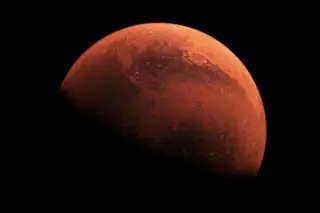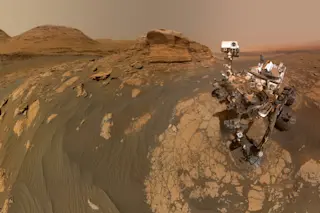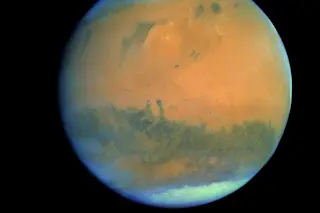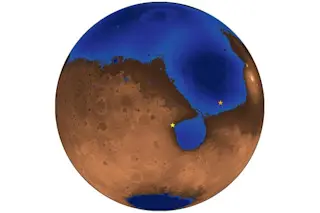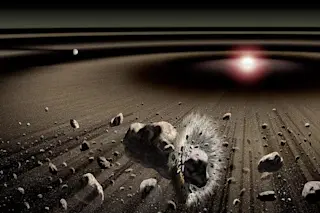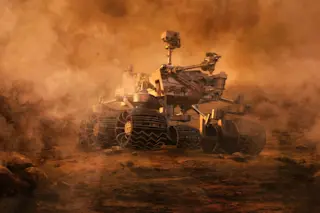The Mars rover Opportunity is wheeling off on what could be its final mission, and is starting a two-year journey that it may not even complete. The small robot climbed out of the Victoria crater a few weeks ago, and NASA's science team has now decided to direct Opportunity towards an even larger crater, known as Endeavor.
The 7-mile stretch between Victoria and Endeavor craters matches the total distance the rover already has covered in the 4 1/2 years since landing on the planet. "We may not get there but it is scientifically the right direction to go anyway," said [researcher] Steve Squyres.... "This crater (Endeavor) is staggeringly large compared to anything we've seen before" [Reuters].
Endeavor measures almost 14 miles in diameter, and its deep crater would allow Opportunity to study old layers of rock to learn about Mars' geological history. But even if the rover never makes it ...





